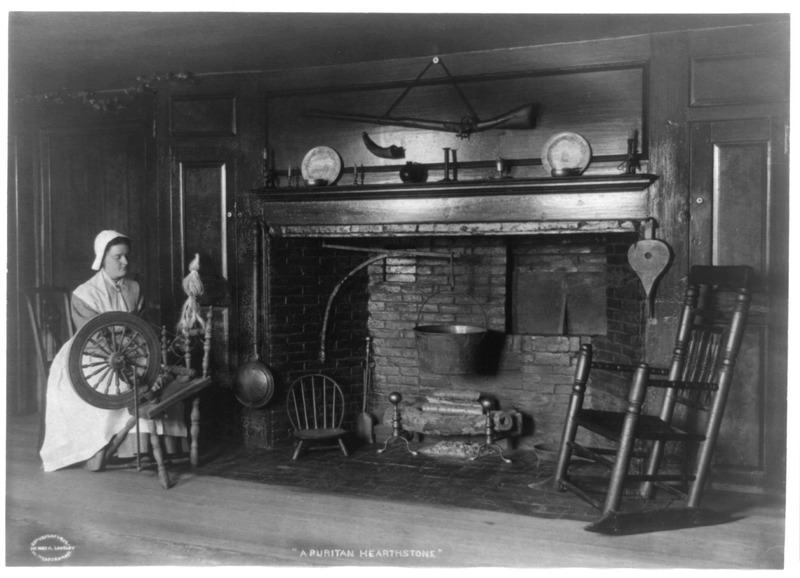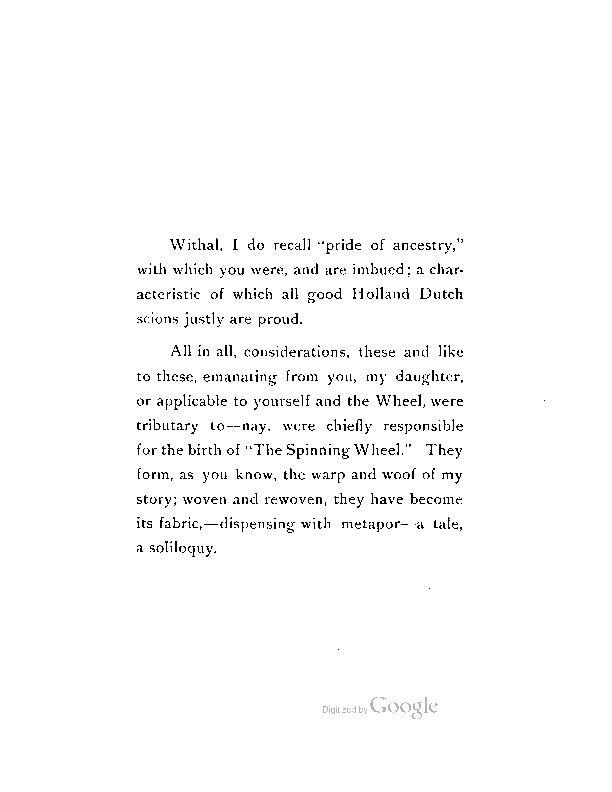Conclusion: Biography and Identity
This photograph, entitled, A Puritan Hearthstone, contributes to many of our previous observations on the ideological significance of the spinning. Again, it is found to be including the hearth, the very traditional, rural-style room, and the traditionally dressed woman. But in this situation, the name gives us clues in what to look for—she is a Puritan, dressed in religiously traditional clothing, with a home styled much more traditionally American. The object in it, especially the spinning wheel, can actually lay claim to this identity as much as she can. Her heritage and home as a puritan are more long lasting than her, and in a sense provide her with the ability to live in an authentically puritan home. The ‘Puritan Hearthstone’ next to the puritan spinning wheel gives both her and us a biography of her lineage’s religious history and identity.
The excerpt is a book in which a woman’s daughter receives an heirloom spinning wheel from a relative. She retells through a variety of prose and poem segments, the impact and significance of this event. In many ways, I believe this piece of text to be the most important piece in the exhibit. It represents exactly what this collection has been hinting to—the collapsing together of human and object identity. The “Holland Dutch” refer just as much to the creators of the spinning wheel as to the human progenitors. The “pride of ancestry” that the human owner of the spinning wheel might feel can apply to the wheel. It can stand as a surrogate, a direct contact for those ancestors whom the woman never could have known, yet is constituted by. She is from Dutch descent and can emotionally connect to that through this living heirloom in a way that would have been impossible otherwise.
Conclusion
This exhibit has attempted to give you an overview of how one might view the spinning wheel, not as merely a tool or aesthetic object, but as an object of identity so constituted through both these characteristics. One can, simply by viewing and thinking about these images, come to an understanding of some of the symbolic value that they have, their existence as a living object, something that helps define who owns them, the people the spinning wheel is related to.
As much as I have endeavored to give a cohesive argument through the exhibit, there is information that can only be well expressed through a more structured argument, specifically the rise in popularity of the spinning wheel as an image, not merely as a symbolic object. As I hinted, this comes from a societal change, a change which I have well characterized in the paper you will find regarding this exhibit in the next section. They are meant to function as a whole, the essay only given meaning through the pictures, and the pictures telling a story in a structured frame. Together, it is my wish, that they give you a picture of the ideological character of the heirloom and the power of the domestic object.

